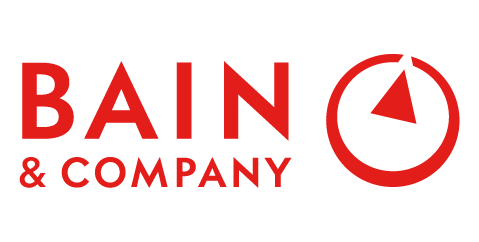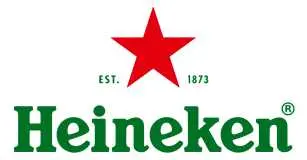
Talent Management Software Market Growth, Size, Trends, Scope, Revenue and Future Outlook
Talent Management Software Market Size- By Type, By Enterprise Type, By Deployment, By End-User- Regional Outlook, Competitive Strategies and Segment Forecast to 2033
| Published: Jul-2023 | Report ID: IACT23133 | Pages: 1 - 238 | Formats*: |
| Category : Information & Communications Technology | |||
- Demand for streamlining the hiring process: The market for Global Talent Management Software is significantly driven by the need to simplify the hiring process. Companies from all sectors are becoming more aware of the need to streamline their hiring procedures in order to efficiently attract and hire top talent.
- Evolving Workforce Dynamics: Organizations are managing a more diverse and widely dispersed workforce as a result of the emergence of the digital age and shifting workforce demographics. In order to support efficient talent management across various locations and work arrangements, Global Talent Management Software includes features like remote access, mobile capabilities, and collaboration tools.
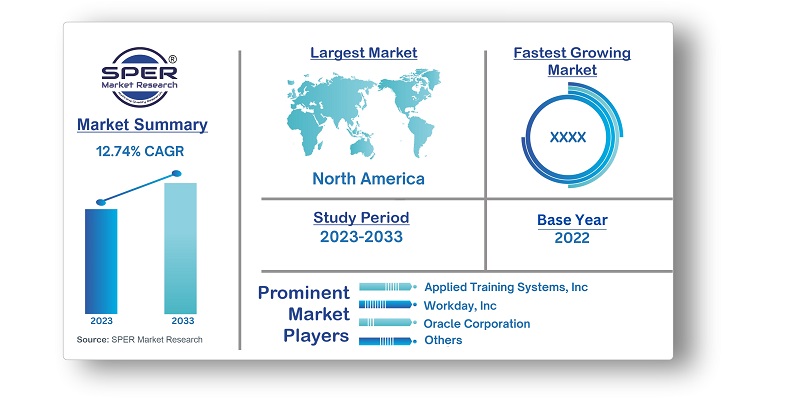
- Integration Complexity: It can be difficult and complicated to integrate Global Talent Management Software with current HR systems, such as HRIS and payroll systems. To ensure efficient operations and accurate information flow, seamless integration and data synchronisation are crucial.
- Data Security and Privacy Concerns: As Global Talent Management Software involves handling sensitive employee data, ensuring data security and privacy is a critical challenge. Providers need to implement robust security measures, comply with data protection regulations, and establish trust with customers regarding data handling practices.

| Report Metric | Details |
| Market size available for years | 2019-2033 |
| Base year considered | 2022 |
| Forecast period | 2023-2033 |
| Segments covered | By Type, By Enterprise Type, By Deployment, By End-User. |
| Regions covered | Asia-Pacific, Europe, Middle East and Africa, North America, Latin America |
| Companies Covered | 15Five (U.S.), Applied Training Systems, Inc. (Trakstar) (U.S.), BambooHR LLC (U.S.), Cornerstone OnDemand (Saba Software, Inc.) (U.S.), IBM Corporation (U.S.), Oracle Corporation (U.S.), Sage Group plc (U.K.), SAP SE (Germany), Talentsoft (France), Workday, Inc. (U.S.) |
- Human Resources (HR) Departments
- Talent Acquisition Managers
- Learning and Development Professionals
- Small, Medium, and Large Enterprises
- Others
| By Type : |
|
| By Enterprise Type : |
|
| By Deployment : |
|
| By End-User : |
|
- Global Talent Management Software Market Size (FY’2023-FY’2033)
- Overview of Global Talent Management Software Market
- Segmentation of Global Talent Management Software Market By Type (Compensation Management, Learning Management, Performance Management, Talent Acquisition)
- Segmentation of Global Talent Management Software Market By Enterprise Type (Large Enterprises, Small and Medium Enterprises (SMEs))
- Segmentation of Global Talent Management Software Market By Deployment (Cloud, On-Premise)
- Segmentation of Global Talent Management Software Market By End-User (BFSI, Education, Government, Healthcare, IT and Telecommunication, Manufacturing, Others (Retail, M&E))
- Statistical Snap of Global Talent Management Software Market
- Expansion Analysis of Global Talent Management Software Market
- Problems and Obstacles in Global Talent Management Software Market
- Competitive Landscape in the Global Talent Management Software Market
- Impact of COVID-19 and Demonetization on Global Talent Management Software Market
- Details on Current Investment in Global Talent Management Software Market
- Competitive Analysis of Global Talent Management Software Market
- Prominent Players in the Global Talent Management Software Market
- SWOT Analysis of Global Talent Management Software Market
- Global Talent Management Software Market Future Outlook and Projections (FY’2023-FY’2033)
- Recommendations from Analyst
1.1. Scope of the report1.2. Market segment analysis
2.1. Research data source2.1.1. Secondary Data2.1.2. Primary Data2.1.3. SPER’s internal database2.1.4. Premium insight from KOL’s2.2. Market size estimation2.2.1. Top-down and Bottom-up approach2.3. Data triangulation
4.1. Driver, Restraint, Opportunity and Challenges analysis4.1.1. Drivers4.1.2. Restraints4.1.3. Opportunities4.1.4. Challenges4.2. COVID-19 Impacts of the Global Talent Management Software Market
5.1. SWOT Analysis5.1.1. Strengths5.1.2. Weaknesses5.1.3. Opportunities5.1.4. Threats5.2. PESTEL Analysis5.2.1. Political Landscape5.2.2. Economic Landscape5.2.3. Social Landscape5.2.4. Technological Landscape5.2.5. Environmental Landscape5.2.6. Legal Landscape5.3. PORTER’s Five Forces5.3.1. Bargaining power of suppliers5.3.2. Bargaining power of buyers5.3.3. Threat of Substitute5.3.4. Threat of new entrant5.3.5. Competitive rivalry5.4. Heat Map Analysis
6.1. Global Talent Management Software Market Manufacturing Base Distribution, Sales Area, Product Type6.2. Mergers & Acquisitions, Partnerships, Product Launch, and Collaboration in Global Talent Management Software Market
7.1. Global Talent Management Software Market Value Share and Forecast, By Type, 2023-20337.2. Compensation Management7.3. Learning Management7.4. Performance Management7.5. Talent Acquisition7.6. Others
8.1. Global Talent Management Software Market Value Share and Forecast, By Enterprise Type, 2023-20338.2. Large Enterprises8.3. Small and Medium Enterprises (SMEs)8.4. Others
9.1. Global Talent Management Software Market Value Share and Forecast, By Deployment, 2023-20339.2. Cloud9.3. On-Premise9.4. Others
10.1. Global Talent Management Software Market Value Share and Forecast, By End-User, 2023-203310.2. BFSI10.3. Education10.4. Government10.5. Healthcare10.6. IT and Telecommunication10.7. Manufacturing10.8. Others (Retail, M&E)10.9. Others
11.1. Global Talent Management Software Market Size and Market Share
12.1. Global Talent Management Software Market Size and Market Share By Type (2019-2026)12.2. Global Talent Management Software Market Size and Market Share By Type (2027-2033)
13.1. Global Talent Management Software Market Size and Market Share By Enterprise Type(2019-2026)13.2. Global Talent Management Software Market Size and Market Share By Enterprise Type(2027-2033)
14.1. Global Talent Management Software Market Size and Market Share By Deployment (2019-2026)14.2. Global Talent Management Software Market Size and Market Share By Deployment (2027-2033)
15.1. Global Talent Management Software Market Size and Market Share By End-User (2019-2026)15.2. Global Talent Management Software Market Size and Market Share By End-User (2027-2033)
16.1. Global Talent Management Software Market Size and Market Share By Region (2019-2026)16.2. Global Talent Management Software Market Size and Market Share By Region (2027-2033)16.3. Asia-Pacific16.3.1. Australia16.3.2. China16.3.3. India16.3.4. Japan16.3.5. South Korea16.3.6. Rest of Asia-Pacific16.4. Europe16.4.1. France16.4.2. Germany16.4.3. Italy16.4.4. Spain16.4.5. United Kingdom16.4.6. Rest of Europe16.5. Middle East and Africa16.5.1. Kingdom of Saudi Arabia16.5.2. United Arab Emirates16.5.3. Rest of Middle East & Africa16.6. North America16.6.1. Canada16.6.2. Mexico16.6.3. United States16.7. Latin America16.7.1. Argentina16.7.2. Brazil16.7.3. Rest of Latin America
17.1. 15Five (U.S.)17.1.1. Company details17.1.2. Financial outlook17.1.3. Product summary17.1.4. Recent developments17.2. Applied Training Systems, Inc. (Trakstar) (U.S.)17.2.1. Company details17.2.2. Financial outlook17.2.3. Product summary17.2.4. Recent developments17.3. BambooHR LLC (U.S.)17.3.1. Company details17.3.2. Financial outlook17.3.3. Product summary17.3.4. Recent developments17.4. Cornerstone OnDemand (Saba Software, Inc.) (U.S.)17.4.1. Company details17.4.2. Financial outlook17.4.3. Product summary17.4.4. Recent developments17.5. IBM Corporation (U.S.)17.5.1. Company details17.5.2. Financial outlook17.5.3. Product summary17.5.4. Recent developments17.6. Oracle Corporation (U.S.)17.6.1. Company details17.6.2. Financial outlook17.6.3. Product summary17.6.4. Recent developments17.7. Sage Group plc (U.K.)17.7.1. Company details17.7.2. Financial outlook17.7.3. Product summary17.7.4. Recent developments17.8. SAP SE (Germany)17.8.1. Company details17.8.2. Financial outlook17.8.3. Product summary17.8.4. Recent developments17.9. Talentsoft (France)17.9.1. Company details17.9.2. Financial outlook17.9.3. Product summary17.9.4. Recent developments17.10. Workday, Inc. (U.S.)17.10.1. Company details17.10.2. Financial outlook17.10.3. Product summary17.10.4. Recent developments
SPER Market Research’s methodology uses great emphasis on primary research to ensure that the market intelligence insights are up to date, reliable and accurate. Primary interviews are done with players involved in each phase of a supply chain to analyze the market forecasting. The secondary research method is used to help you fully understand how the future markets and the spending patterns look likes.
The report is based on in-depth qualitative and quantitative analysis of the Product Market. The quantitative analysis involves the application of various projection and sampling techniques. The qualitative analysis involves primary interviews, surveys, and vendor briefings. The data gathered as a result of these processes are validated through experts opinion. Our research methodology entails an ideal mixture of primary and secondary initiatives.
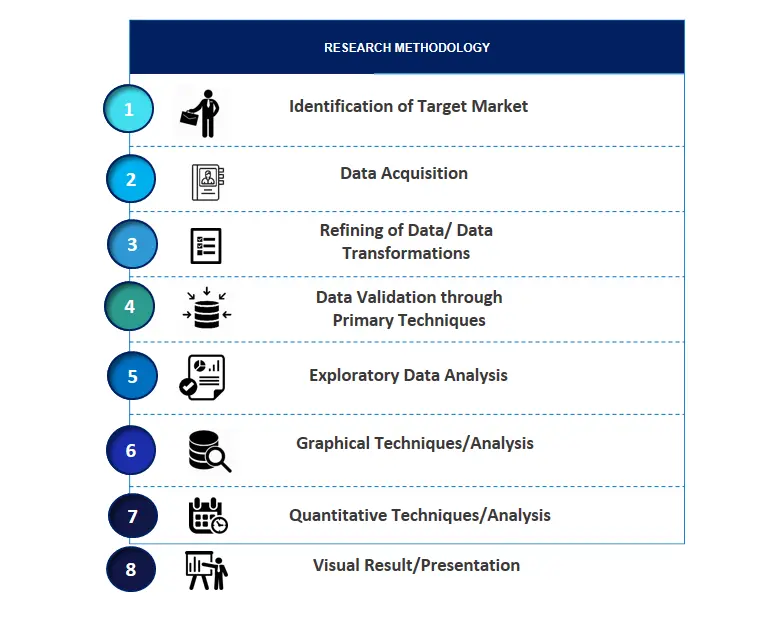
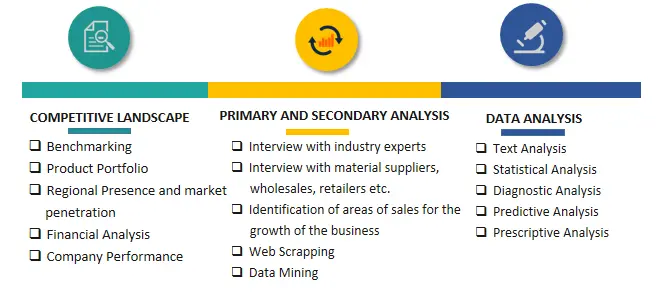

Frequently Asked Questions About This Report
PLACE AN ORDER
Year End Discount
Sample Report
Pre-Purchase Inquiry
NEED CUSTOMIZATION?
Request CustomizationCALL OR EMAIL US
100% Secure Payment






Related Reports
Our Global Clients
Our data-driven insights have influenced the strategy of 200+ reputed companies across the globe.







